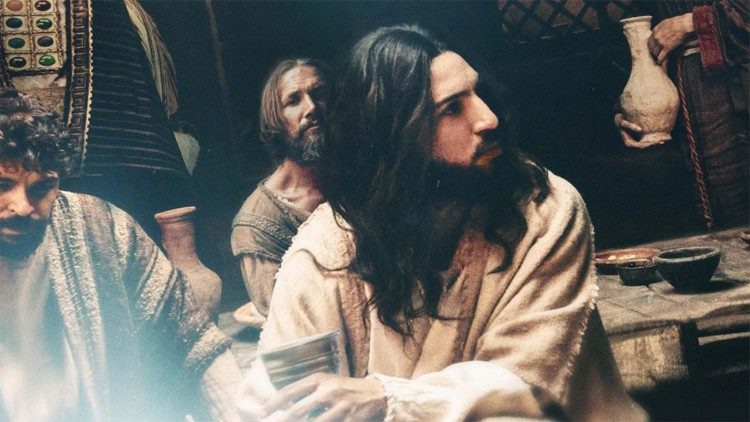‘The Last Supper’: In the Upper Room with Jesus
Screenwriter and movie director Mauro Borrelli speaks of The Last Supper, his newly released film starring James Oliver Wheatley, Jamie Ward, and James Faulkner and on why this intimate retelling of the final hours before Christ’s Passion is resonating with audiences.
Apr 18, 2025

By Linda Bordoni
Released in the United States on March 14, director and screenwriter Mauro Borrelli’s The Last Supper arrives during a renewed cultural openness to Christian narratives, alongside projects by directors like Martin Scorsese and Terrence Malick. Speaking about his personal inspiration, the theological and historical accuracy that he strived to maintain, and his focus on the human drama of those involved, Borrelli makes it clear that his approach began with a sense of mystery.
“I was looking at Leonardo da Vinci’s painting of the Last Supper,” he recalls, “and I thought—why has no one ever made a full film about that moment? Every Sunday, millions hear those words: ‘This is my body, this is my blood.’ But what do we really know about what happened in that upper room?”
Motivated by a desire to explore the spiritual and human layers of the event, Borrelli studied the Scriptures, particularly the Gospel of John, and Jewish Passover tradition. The result is a story told from the perspective of Peter, the fisherman—a man of passionate conviction who is slowly brought to the edge of self-doubt and fragility.
Peter, Judas, and the human journey
At the heart of the film is Peter's arc, portrayed not as a flawless pillar of faith but as a man whose confidence is tested in the most painful way.
“He starts off certain, almost like a bodyguard,” Borrelli says. “But as the night unfolds, he watches suspicion grow—who will betray Jesus? And then, in the end, it’s Peter who denies him. That arc, from strength to fragility, speaks to all of us. It’s a call to humility.”
To deepen this message, Borrelli also brings Judas into focus—not as a flat antagonist but as a man struggling with temptation and isolation.
“Both Judas and Peter face moments of weakness,” he reflects. “The difference is, Peter had Jesus praying for him, and he found help. Judas did not. It reminds us of how vital it is to remain connected—to family, to community, to the Church.
Faithfulness without controversy
Borrelli was clear from the outset: he wanted to make a film faithful to both the theological truth and historical context of the Last Supper. His goal was to offer something Christians of all traditions—and Jews—could watch with peace.
“I didn’t want a controversial film,” he says. “What is in the Gospels, I kept as loyal as possible. Where there were gaps, I filled them with what was plausible, respectful.”
One key theological insight Borrelli explores is the meaning of the covenant. Drawing from Jewish tradition, he reflects on how the blood of lambs, offered annually at Passover, was a form of atonement—until Jesus, the Lamb of God, fulfilled that sacrifice once, for all.
“That Eucharistic mystery,” he says, “is what I want people to grasp in a new way: that Christ’s sacrifice was complete. Final. For everyone.”
A space that feels sacred
Filmed in Ouarzazate, Morocco, with a carefully designed set for the Upper Room, The Last Supper seeks to immerse viewers in the world of Jesus. “I wanted people to feel they were there, to walk those steps, to hear the sounds, to feel the tension,” Borrelli explains.
The film’s pacing, lighting, and structure invite the viewer into a meditative yet dramatic experience—more than a reenactment, Borrelli says, it's an invitation to presence.
A story for all seasons
Though the film was not released in time for Easter in Europe, Borrelli believes its message is timeless. “This is a story that belongs to every day of the year,” he says. “If viewers walk away feeling they sat at the table with Jesus, even for a moment, then I’ve done my job.”--Vatican News







Total Comments:0